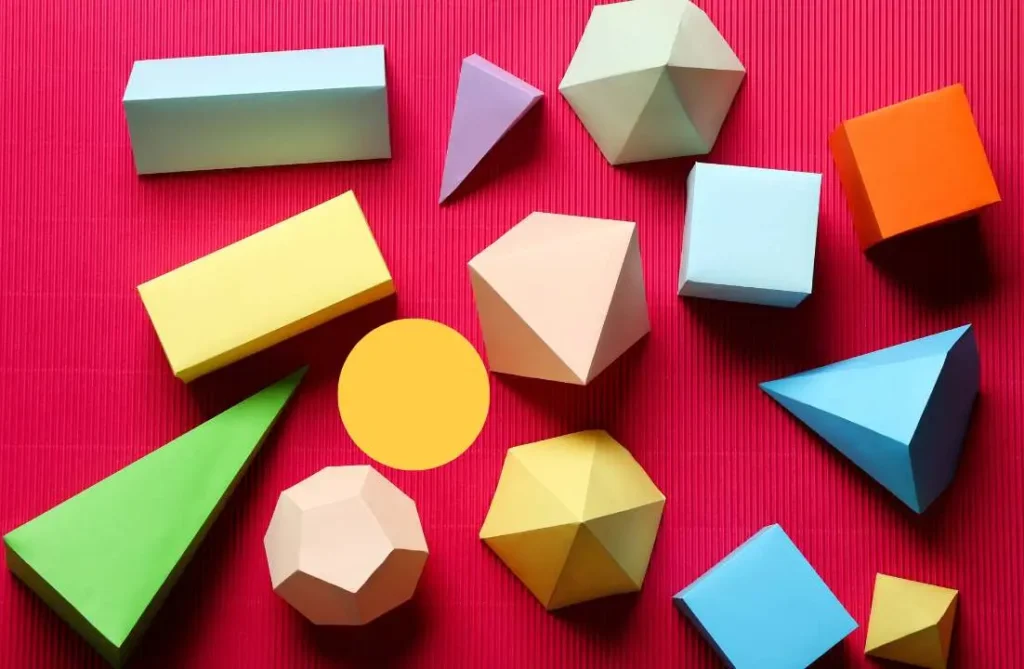Geometric figures

Understanding geometric figures is fundamental in mathematics and various fields such as physics, engineering, and art. These shapes not only help us comprehend the properties of space and form but also play an essential role in real-world applications. Let's explore the different types of geometric figures, their classifications, and the fascinating characteristics that define them.
What is a geometric figure?
A geometric figure is defined as a visual representation of a shape that can possess various characteristics. These representations can be composed of points, lines, or an arrangement of lines connecting points in a specific manner. Although abstract in nature, geometric figures manifest in numerous ways in our physical environment.
The study of these figures falls under the branch of mathematics known as geometry, which focuses on defining, characterizing, and analyzing different shapes. The classification of geometric figures can be based on several criteria, including their dimensionality, shape, and the number of sides.
Figures can be categorized as:
- Adimensional figures
- Linear figures
- Bidimensional (or flat) figures
- Tridimensional (or volumetric) figures
Understanding dimensional classifications
Geometric figures are primarily classified based on their dimensions, which significantly influence their properties and applications. Let's delve deeper into each category:
Adimensional figures
Adimensional figures lack any measurable dimensions, meaning they do not have length, width, or depth. The most common example is the point, which signifies a specific location in space without any physical size.
Linear figures
Linear figures exist in one dimension, represented by lines that can extend infinitely in both directions. They include:
- Straight lines: Defined as a direct path between two points.
- Curved lines: Lines that bend and do not follow a straight course.
Bidimensional or flat figures
These figures possess two dimensions: length and width. They can be subdivided into two main categories:
- Polygons: Closed figures formed by straight lines. Examples include:
- Triangles: Three-sided shapes that can be classified as:
- Equilateral triangles: All sides are equal.
- Isosceles triangles: Two sides are equal.
- Scalene triangles: All sides are of different lengths.
- Quadrilaterals: Four-sided figures, which include:
- Squares: Four equal sides and angles.
- Rectangles: Opposite sides are equal and four right angles.
- Rhombuses: Four equal sides with opposite angles equal.
- Trapezoids: At least one pair of parallel sides.
- Higher polygons: Figures with more than four sides, such as pentagons (five sides), hexagons (six sides), and so forth.
- Triangles: Three-sided shapes that can be classified as:
- Curved figures: These include shapes that consist of at least one curved line. Common examples are:
- Circles: Defined as all points equidistant from a center point.
- Ellipses: Similar to circles but elongated, creating a symmetrical oval shape.
Vocabulary of two-dimensional figures
To better understand two-dimensional figures, it's essential to familiarize ourselves with specific terminology:
- Side: Each line segment of a polygon.
- Vertex: The point where two sides meet.
- Angle: Formed by the intersection of two lines, measured in degrees (°).
Tridimensional or volumetric figures
Tridimensional figures possess three dimensions: length, width, and height, giving them volume. They are categorized into:
- Polyhedra: Composed of flat polygonal faces, such as:
- Cubes: Six square faces.
- Prisms: Two identical polygonal bases connected by rectangular faces.
- Pyramids: A polygonal base with triangular faces converging at a point.
- Round bodies: Featuring at least one curved surface. Examples include:
- Spheres: All points on the surface are equidistant from the center.
- Cylinders: Two circular bases connected by a curved surface.
- Cones: A circular base that tapers to a point.
Vocabulary of three-dimensional figures
Understanding tridimensional figures also requires knowledge of specific terms:
- Face: A flat surface that forms part of a three-dimensional figure.
- Edge: The line where two faces meet.
- Vertex: A point where three or more edges converge.
Geometric figures for children
Introducing geometric figures to children can be both fun and educational. Utilizing engaging methods, such as visual aids and interactive activities, can enhance their understanding. Here are some ways to teach geometric concepts:
- Use flashcards: Create cards with different shapes and their names for recognition games.
- Hands-on activities: Encourage children to build shapes using clay or sticks.
- Art projects: Involve children in drawing or painting various geometric figures.
Practical applications of geometric figures
Geometric figures are not just theoretical; they have numerous practical applications across various fields:
- Architecture: Designing buildings and structures requires understanding shapes and their properties.
- Engineering: Engineers utilize geometric figures to solve problems and create efficient designs.
- Art and design: Artists often incorporate geometric shapes to create visually appealing works.
Conclusion
The study of geometric figures is a vital part of mathematics that enriches our understanding of the world around us. By exploring their classifications, characteristics, and applications, we can appreciate the foundational role these shapes play in various disciplines.
Interesting Articles